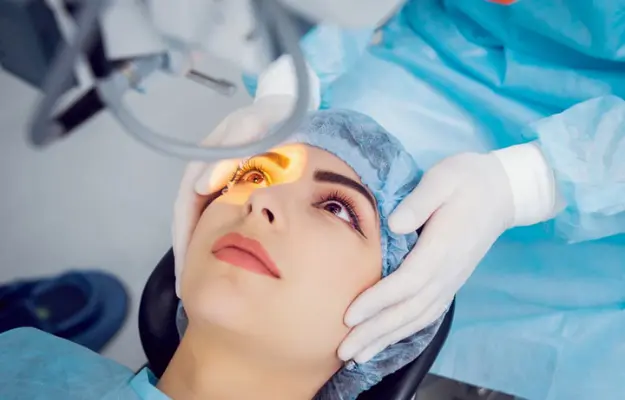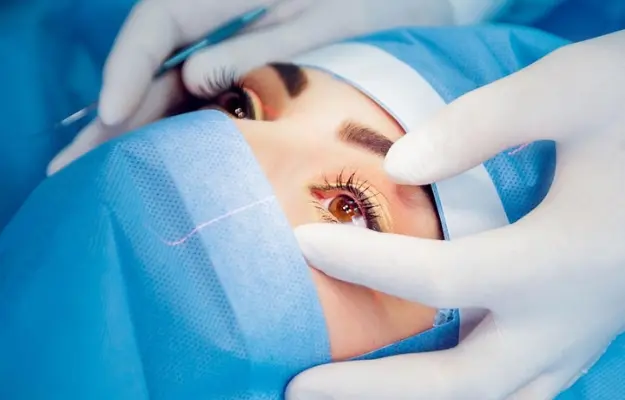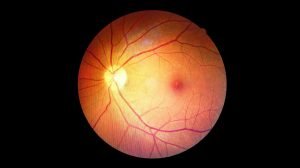In recent years, ophthalmology has witnessed remarkable advancements, bringing hope and clear vision to millions of people worldwide. From non-invasive treatments to sophisticated microsurgical techniques, modern eye treatment and surgical methods have revolutionized how we address visual problems. These technologies not only safely and effectively correct common refractive errors but also successfully treat complex eye diseases that were once considered difficult or impossible to cure.
This article serves as a comprehensive guide, synthesizing and introducing the most prevalent modern eye treatment and surgical methods available today. We will delve into the operating mechanisms, advantages, disadvantages, and ideal candidates for each procedure. This will provide you with a holistic view of the options available, enabling you to make informed decisions for your eye health in consultation with ophthalmology experts.
Laser Surgery for Refractive Errors
Laser surgery is one of the most popular and effective methods for correcting refractive errors such as myopia (nearsightedness), hyperopia (farsightedness), and astigmatism. The goal of the surgery is to reshape the cornea so that light focuses precisely on the retina without the need for glasses or contact lenses.
LASIK (Laser-Assisted in Situ Keratomileusis)
LASIK is the most commonly performed refractive surgery worldwide due to its rapid recovery and high effectiveness.
Operating Mechanism
LASIK surgery involves two main steps. First, the surgeon creates a thin flap on the surface of the cornea. This can be done with a microkeratome or a femtosecond laser (Femto-LASIK), a more advanced technology that creates the flap with high precision and safety. The flap is then lifted to expose the underlying corneal tissue. Next, an excimer laser is used to reshape the cornea’s curvature in a matter of seconds. Finally, the corneal flap is repositioned and naturally heals itself without the need for stitches.
Advantages
- Rapid Visual Recovery: Most patients experience significantly improved vision within 24 hours post-surgery.
- Minimal Discomfort: The procedure itself is painless, and post-operative discomfort is typically very mild.
- High and Stable Results: Visual outcomes are generally stable for many years.
Disadvantages
- Not suitable for individuals with corneas that are too thin.
Ideal Candidates
Individuals over 18 with a stable prescription for at least one year, corneas of adequate thickness, and no other eye diseases like keratoconus.
Flapless Surgery (PRK)
This surgery is ideal for those with thin or irregularly shaped corneas, or for individuals with active lifestyles (e.g., contact sports athletes) who are not suitable for LASIK.
Operating Mechanism
The surgeon removes the top layer of the cornea (the epithelium) either mechanically or with a diluted alcohol solution. The excimer laser then directly reshapes the underlying tissue. A bandage contact lens is placed on the eye to protect it while the epithelium regenerates over the next few days.
Advantages
- Safer for Thin Corneas: There is no risk of flap-related complications.
- Suitable for High-Risk Lifestyles: It’s a safer option for those prone to eye trauma.
Disadvantages
- Longer recovery time: Vision may remain blurry for several days to weeks compared to LASIK, where patients often see well within 24–48 hours.
- Discomfort after surgery: PRK tends to cause more pain, irritation, and light sensitivity in the first few days, as the corneal surface needs time to heal.
- Risk of haze or scarring: In some cases, the cornea may develop haze during healing, which can affect vision quality.
- Use of bandage contact lens: Patients usually need a protective lens for a few days post-surgery to aid healing.
- Greater need for medications: Longer use of eye drops (antibiotics, steroids, lubricants) is often required.
ReLEx SMILE (Small Incision Lenticule Extraction)
ReLEx SMILE is the latest generation of laser refractive surgery, providing a minimally invasive and flapless alternative to LASIK. Instead of creating a large corneal flap, SMILE uses a femtosecond laser to create a thin lenticule of corneal tissue inside the cornea. This lenticule is then removed through a micro-incision of only 2–4 mm. By reshaping the cornea in this way, SMILE corrects myopia and astigmatism while preserving corneal biomechanics and reducing the risk of post-operative dry eye.
Operating Mechanism
The surgeon programs a femtosecond laser to create a lenticule within the cornea. A small tunnel-like incision is then made, through which the lenticule is carefully extracted. Once removed, the cornea changes shape, allowing light to focus correctly on the retina.
Advantages
- Flapless and Minimally Invasive: No large corneal flap is created, lowering the risk of flap-related complications.
- Reduced Dry Eye Symptoms: Fewer corneal nerves are affected compared to LASIK.
- Better Corneal Stability: More of the natural corneal structure is preserved.
- Quick and Predictable Recovery: Most patients achieve good vision within a few days.
Disadvantages
- Currently limited to treating myopia (up to –10D) and mild to moderate astigmatism.
- Not yet available everywhere and usually more expensive than LASIK or PRK.
Ideal Candidates
Individuals with myopia and/or mild astigmatism who want a safe, modern, and minimally invasive vision correction method, particularly those concerned about flap-related risks or post-operative dry eye.
Cataract Surgery
Cataract surgery is one of the most successful and frequently performed eye surgeries globally. Its purpose is to remove a cloudy lens and replace it with an artificial one.
Operating Mechanism
Phacoemulsification (Phaco) is the current gold standard. The surgeon makes a very small incision (about 2-3mm) on the cornea. A high-frequency ultrasound probe is then used to break up the cloudy lens into small fragments, which are suctioned out. Finally, a foldable artificial lens (Intraocular Lens – IOL) is inserted into the empty lens capsule. The incision is so small that it typically seals itself without stitches.
Advantages
- Short Surgical Time: The procedure takes only about 10-15 minutes.
- Small Incision, Minimal Pain, and Rapid Recovery: Patients can go home the same day, and vision improves significantly within a few days.
- High Success Rate: Phaco surgery has a very high safety and success rate.
Modern IOLs
This represents a major advancement. Modern IOLs not only provide clear distance vision (monofocal IOLs) but also offer more advanced functions:
- Multifocal IOLs: Allow patients to see clearly at multiple distances (far, intermediate, and near), reducing or eliminating their dependence on glasses.
- EDOF IOLs (Extended Depth of Focus): Provide an extended range of clear vision—especially from distance to intermediate (driving, computer work)—with a smoother focus transition and typically fewer halos/glare than traditional multifocals. Fine print may still require light reading glasses.
- Toric IOLs: Specifically designed to correct astigmatism.
Retinal Disease Treatments
Retinal diseases such as diabetic retinopathy and macular degeneration require specialized treatment methods.
Intravitreal Injections
This is a cutting-edge and highly effective treatment for many retinal diseases caused by abnormal blood vessels.
Operating Mechanism
The doctor injects a small amount of medication directly into the vitreous cavity of the eye. These medications deliver a localized therapeutic effect directly to the retina.
Common Medications
- Anti-VEGF Drugs: The most widely used medication for treating wet macular degeneration and diabetic macular edema. These drugs block the growth and leakage of abnormal blood vessels, reducing swelling and improving vision.
- Steroids: These have a strong anti-inflammatory effect and are used in some cases of macular edema.
Advantages
Highly effective, the procedure is quick (a few minutes), and causes minimal pain.
Retinal Laser Surgery
This surgery uses a high-intensity laser beam to treat retinal problems.
Operating Mechanism
- Pan-retinal Photocoagulation (PRP): A laser is used to create small burns on the peripheral retina to reduce the production of growth factors that stimulate new, abnormal blood vessels, effectively treating proliferative diabetic retinopathy.
- Focal Photocoagulation: A laser is used to precisely seal off leaking blood vessels to treat diabetic macular edema.
- Retinal Tear Repair: A laser is used to “weld” retinal tears, preventing fluid from leaking underneath and causing retinal detachment.
Advantages
A non-invasive technique that is safe and effective in halting the progression of the disease.
>> Vitrectomy Surgery: An Effective Solution to Eliminate Eye Floaters
Vitrectomy Surgery
This is a complex microsurgical technique performed to address serious problems in the vitreous and retina.
Operating Mechanism
The surgeon makes several tiny incisions on the eyeball. Then, using microsurgical instruments, the clouded or hemorrhaged vitreous humor is removed. After clearing the vitreous cavity, the surgeon can perform other maneuvers on the retina, such as peeling membranes, removing scar tissue, or injecting special substances (gas, silicone oil) to hold a detached retina in place.
Applications
Treatment for retinal detachment, severe vitreous hemorrhage, epiretinal membranes, and endophthalmitis.
Glaucoma Treatments
The goal of glaucoma treatment is to lower intraocular pressure (IOP) to prevent further damage to the optic nerve.
Laser Surgery
- Laser Trabeculoplasty: A laser is used to create small burns in the drainage angle, improving the outflow of aqueous humor and reducing IOP.
- Laser Iridotomy: A small hole is created in the iris to improve fluid circulation, particularly effective in angle-closure glaucoma.
Filtration Surgery
This is the treatment method of choice when eye drops and laser surgery are not effective.
- Trabeculectomy: The surgeon creates a new drainage pathway for the eye, allowing aqueous humor to flow out of the eyeball and effectively lowering IOP.
- Glaucoma Drainage Devices: A small shunt or valve is implanted in the eye to drain fluid, providing stable long-term IOP control.
Conclusion
Modern eye treatment and surgical methods have ushered in a new era in ophthalmology, allowing us to not only preserve but also restore vision safely and effectively. The choice of the right treatment method depends on many factors, including the type of disease, its severity, the patient’s overall health, and the anatomical characteristics of their eyes. Therefore, consulting with ophthalmology specialists is a prerequisite for making the best decision. By leveraging these advanced technologies, we can protect our eyes and enjoy life with clear, complete vision.
>> Read more: Comprehensive Eye Care From the Inside Out









